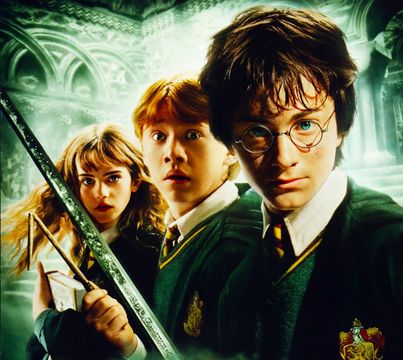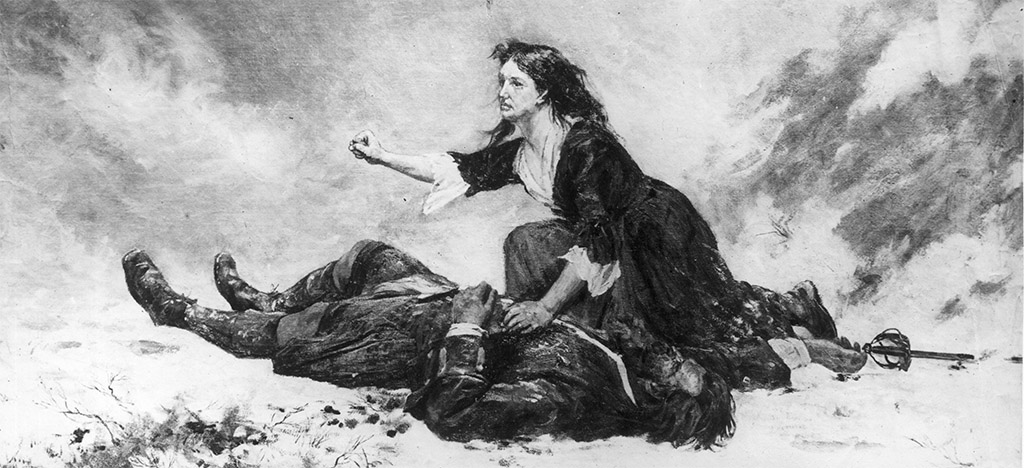
Lumos! Travel through the wonder of Harry Potter's Scotland.
Harry Potter's Scotland is just magic.
Editor's note: Originally published in Nov 2004.
“There are black slugs everywhere!" my 6-year-old daughter gleefully exclaimed as we combed a steep grassy slope hunting for traces of wizards and magic. Harry Potter film crews had just dismantled the hut of the giant, Hagrid, and we were hot on their trail in the mountains of Glencoe, Scotland. “Ron Weasley must have been throwing up all over the place,” she added with delight.
Read more
I knew just what she meant. Oversized slugs seemed to hang from every blade of rain-drenched grass. It reminded us of the scene in the second film and book, Harry Potter and the Chamber of Secrets when Potter’s friend Ron is cursed with a comical form of indigestion. With so much of the movie series being filmed in the western Highlands and the release of the third episode this past summer, Potter fans have been flooding to Scotland. Like many before us, we came in search of wizards but were soon bewitched by the region’s folklore and beauty.
Battles, massacres, and murders have stained these ancient rocks, which geologists rate among the oldest in Europe. It is a storied land of giants, witches, and, most recently, wizards.
We stood in a made-for-movie landscape. Lush, broad valleys of tall grasses and purple foxglove swept up to craggy ridges shrouded in ominous, swirling clouds. Far above loomed the dizzying ridge of Aonach Eagach, famous for its breathtaking razors-edge trail, where hikers have fallen a thousand feet to their deaths. Battles, massacres, and murders have also stained these ancient rocks, which geologists rate among the oldest in Europe. It is a storied land of giants, witches, and, most recently, wizards.
When Potter’s cinematic sorcerers chose to film here in Clachaig Gulley, they weren’t the first. Braveheart, Rob Roy, and The Highlander preceded Harry, to name just a few. But after several magical seasons, Warner Brothers extended its Glencoe land lease an additional two years along with return engagements at the famous Glenfinnan Viaduct and a few other local sites.
Author J.K. Rowling is said to live in a small “castle" outside Edinburgh. The release of the fifth of her planned seven tomes was at the time the largest book pre-order in history, and her books’ first two films have grossed more than $1. 8 billion worldwide. Most of the shooting was confined to London’s Leavesden Studios, but for location work, the main stage is the western Highlands, Rowling’s implied setting for Hogwarts School of Witchcraft and Wizardry.
Eager tourists thronged Glencoe to try to get close to the movie set, which featured Hagrid’s hut, fiberglass standing stones, a sundial, and a small bridge (a computer-generated chasm was added later). Police had to block the dirt road to Clachaig Gulley, and security guards hiked the hills, snagging overzealous fans and photographers.
A few lucky locals with connections were the exception. “I sat in Hagrid’s chair,” silver-haired receptionist Josephine Duffield proudly told us at the Isles of Glencoe Hotel. “Six little girls your daughter’s size could have comfortably fit in it. It was like Neverland. The teapot was this big,” she motioned with great relish, hands held high, “and the cups were enormous.‘
We envied her, but arriving late on the scene had its advantages. With the cast gone, the manager happily gave us the room Daniel Radcliffe (aka Harry Potter) had occupied weeks earlier. As avid fans, we felt as if Rowling’s fabled Sorting Hat had bellowed “Gryffindor!” and put us in the most prized dormitory at Hogwarts. That evening we sat at our picture window gazing across Loch Leven, sure that Radcliffe had done the very same. Boats sailed the narrow fjord past mountains quilted with pasture and woodlands. Tombstones dotted the isle across from us where Saint Mundus, a disciple of Saint Columba, first settled in AD 600, and centuries of locals buried their most honored dead until the 1950s. Radcliffe and the other child stars must have loved it here, we thought.
In their day, the glen’s real MacDonalds kept their burgers on the grill by cattle rustling, which nearly led to the clan’s demise. During the infamous Glencoe Massacre of February 13, 1692, government troops led by a commander from the rival Campbell clan murdered 38 men, women, and children after the MacDonalds had housed, entertained, and fed them for several weeks. It was the height of treachery.

EXCEPT AS BY RANDALL HYMAN
Blinding snow that fateful morning helped foil the crown’s genocidal plan. Some 300 MacDonalds up and down the valley, including the chief’s two sons and grandson, managed to escape into the hills when the snowstorm obscured the commander’s 5 a.m. signal fire, and troops failed to coordinate the slaughter.
Legend says that the night before the massacre some clansmen saw the phantom witch Bean Nighe washing her clothes in the River Coe, a deadly omen in a land where reality and fantasy overlap. Other valley legends include James of the Glen, unjustly hanged for murder in 1752, as commemorated in R.L. Stevenson’s Kidnapped, and the Celtic giant Fingal, reputed to have defeated a fleet of 40 Viking longboats on the banks of Loch Leven with his band of Feinn warriors.
Archaeologists believe the western Highlands’ earliest settlers arrived around 2000 BC, but that is recent compared to the region’s 2-billion-year-old Lewisian gneiss that joined Scotland with Greenland and North America on the supercontinent of Laurentia some 440 million years ago. Carved over the past 2 million years by four consecutive ice sheets as much as one mile thick, Glencoe’s hanging valleys, sharp ridges, and terraced walls are the roots of an ancient volcano. In the lowlands, these ice sheets left “cnoc and loch an,” rocky hills and lochs.
Compared to all this, Pottermania is just a drop in the historic al cauldron, but we were no less bewitched by wizards. Overhearing our waiter’s tales, a woman from Killearn near Loch Lommond told us about Glencoe’s most recent giant, Robbie Coltrane, aka Rubeus Hagrid.
“He’s big, this way,” she told us holding her hands straight out. “He lives outside our town. Very private man, very nice. He has a son, you know. When the kiddies all got dressed up for a school party last year, his son dressed like Hagrid. He looked spot on. He too is a bit on the big side.”
Mention Harry Potter and you’ll soon discover Highlanders are on the inside track, especially if you’re talking trains. When Warner Brothers needed extras to ride the Hogwarts Express steam train across the Glenfinnan Viaduct, they hired scores of schoolchildren in the Fort William area. Buses ferried the entourage of robed wizards to and from the tiny Glenfinnan train station.
Completed in 1901, the curved viaduct is 100 feet high and nearly a quarter-mile long. In its day it was an engineering marvel that took 3,500 men five years to build. Like most steam train routes in Britain, these rails carry real passenger service, and the viaduct is as sound today as when it was first built. The view from the bridge takes in Loch Shiel and another historic structure, the Glenfinnan Monument, a stone tower topped by a sculpture of a kilted Highlander erected in 1815 to commemorate the Jacobite Rebellion.
It was here in 1745 that Charles Edward Stuart, “Bonnie Prince Charlie,” first raised his standard on Scottish soil weeks after arriving from France to reclaim the throne for his family.
When a clan chieftain initially told him his quest was futile and that he should go home, he reportedly replied, “I am come home.” Some of the MacDonalds, still bitter just five decades after the Glencoe Massacre, were quick to join his ranks. Others tarried. On August 19, as the prince and 150 MacDonalds desperately awaited responses from western Highland clans on the shores of Loch Shiel, 1,000 Camerons came marching over the hills, bagpipes skirling. Prince Charlie was soon joined by 300 MacDonalds, fresh from a victorious skirmish with government troops. The ill-fated Rising of ‘45 was born.’
The engine pulling the “Jacobite’ steam train through this landscape wasn’t the scarlet one of movie fame, but it traveled the same line between Fort William and Mallaig that crosses the Glenfinnan Viaduct. In the second movie, Potter dangles from his friend’s flying car as they race the train across the viaduct on the way to Hogwarts. That scene still lures thousands of film devotees aboard each year.
Staring out our window, we watched as our train chugged and clickety-clacked past lochs, mountains and bays in a sinuous sashay of white steam and black smoke. As sulfuric smoke choked us in tunnels and coal cinders settled in our clothes and hair, we realized why rail passengers abandoned steam trains half a century ago.
Our daughter proudly wore her black Hogwarts robe and round Potter glasses throughout the day, but it wasn’t until we deboarded that she met 20-something Keiko from Tokyo, who had been riding in another carriage. The two were dressed identically except that Keiko sported an official Gryffindor necktie. Our daughter proudly displayed her wand and let Keiko marvel over its red-tipped electric light. Despite the language barrier, they strolled along the platform together, wizards-in-arms, communicating the bare essentials: “Harry Potter, Hogwarts, Gryffindor, Ron Weasley.”
Having combed the western Highlands all the way from Glencoe to Glenfinnan, we had finally found Harry Potter speaking Japanese on a railroad platform. Our trip seemed complete and the message seemed clear: Visit Scotland, no English necessary, tie optional, wand required.
A short distance, as the owl flies, south of the Scottish border lie several more Harry Potter movie locations, such as Alnwick Castle, Durham Castle, and York, Though the castles have provided only small segments of final footage, they are magical in their own right. Alnwick, the residence of the Duke of Northumberland, is the second-largest inhabited castle in England, renowned for its stunning interiors and rare artwork. Twelfth-century Durham Castle, now a college, is one of the most complete and examples of Romanesque architecture in existence.
York, with its amazing labyrinth of charming medieval storefronts, was the setting for Diagon Alley, where the boy wizard bought his first school supplies—a wand, cauldron, pet owl, and magic books. The scarlet Olton Hall steam engine that whisks the young wizards to Hogwarts School of witchcraft and Wizardry in all three films occasionally travels the York—Scarborough excursion line with two carriages bearing the Hogwarts Express logo.
* Originally published in Nov 2004.





Comments